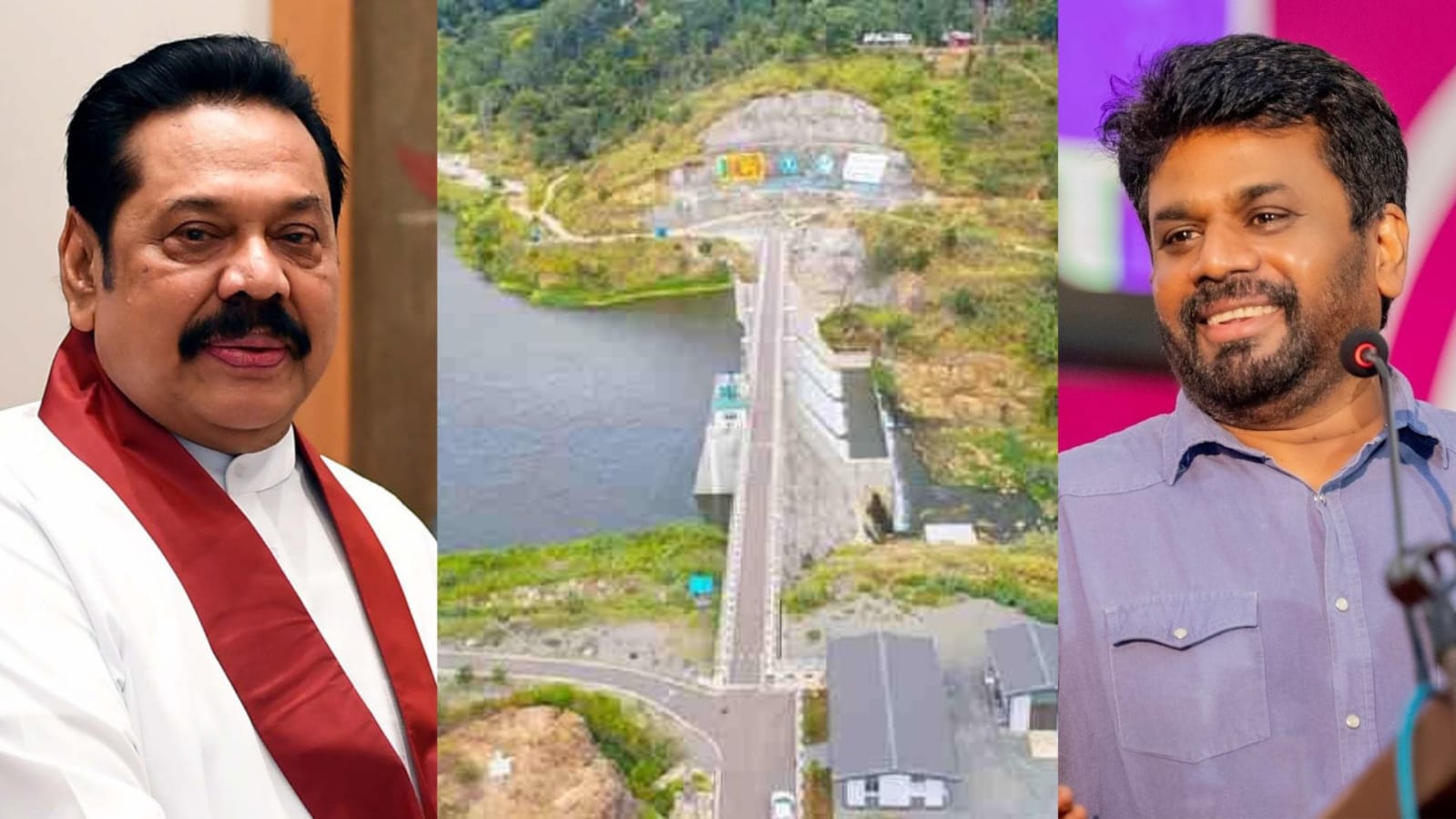
The 120 MW hydropower plant of the Uma Oya project is to become operational this month, making it one of the largest hydropower plants in Sri Lanka after the Victoria, Kotmale and Upper-Kotmale power stations, former President Mahinda Rajapaksa said.
Issuing a statement, the Sri Lanka Podujana Peramuna (SLPP) leader said the Uma Oya project will provide Sri Lanka with a badly needed source of low-cost electricity.
He further said that the Uma Oya project is the only major infrastructure project to which even the anti-establishment Janatha Vimukthi Peramuna (JVP) has contributed positively.
“The construction of this project to divert water from the central highlands to the southeastern dry zone commenced in March 2010. When infrastructure projects that had been discussed and planned over many decades but no government had been able to actually implement, began to be built during my tenure as President, envious individuals denigrated these achievements by saying that the cost estimates of these projects had been inflated by members of my government in order to make money.
Even though evidence of such malpractices has never been placed before the public, an entire generation has grown up believing that anybody who inaugurates a large-scale project is a thief. When such propaganda gains traction, those with the capacity to do something for the country get labelled as villains while those with no capacity to do anything except to talk, criticize and lie, become heroes. If there is evidence of corruption in project implementation, having that evidence examined is one thing, but making politically motivated accusations without any evidence, works against the national interest by demotivating governments and leaders from initiating even essential large-scale projects,” he said.
MP Mahinda Rajapaksa further said that it was fortunate that during his nine-year tenure from 2006 to 2014, he was able to clear a decades-long backlog of planned but unimplemented projects for highways, power generation, irrigation etc., that successive governments had been dreaming of since the 1950s.
“My government also carpeted the roads, built and improved hospitals and schools, and built new housing for the urban poor. So the work done at that time would last some years. However, this is now the tenth year since I ceased to be President, and new investment is needed especially in areas like low-cost electricity generation to meet industrial and service sector needs.
“The operationalization of the Uma Oya project offers Sri Lanka a unique opportunity to inaugurate a new political culture in this country – one that welcomes and appreciates the contribution made by major infrastructure projects for the wellbeing of the people. The two main political parties that have ruled the country since 1948 have made their contributions to the development of the existing infrastructure of the country over several decades. However, the Uma Oya project is the only major infrastructure project to which even the anti-establishment Janatha Vimukthi Peramuna (JVP) has contributed positively.
“Before my government commenced the construction of the Uma Oya project, it had been under discussion for more than fifty years under various governments. The diversion of the Uma Oya was first mooted in 1959 in a study carried out by the United States Operations Mission and the Canadian Hunting Survey Corporation. It also featured in the UNDP/FAO Master Plan for the Mahaweli project during the Dudley Senanayake Government and was the subject of further studies carried out under the Ranasinghe Premadasa and Chandrika Kumaratunga governments. The decision to implement the Uma Oya project was taken when Messrs. Karu Jayasuriya and Jayawickrema Perera held the portfolios of power and energy and irrigation during the UNP government of 2001-2004,” he said.
MP Rajapaksa pointed out that despite all this, when his government began constructing this project which had been on the drawing boards for more than half a century, his political opponents alleged that he had started the Uma Oya project to divert water to Hambantota to irrigate land in his village.
“After the project got off the ground, the Janatha Vimukthi Peramuna (JVP) became the most outspoken critic of the Uma Oya project, and spearheaded opposition to it at the ground level with its leader stating in Parliament that this project had been initiated to divert water to the Hambantota port and airport to realize the dreams of the Rajapaksas. This was part of a blind and unthinking effort to deny the government led by me any political credit for the successes achieved.
“Yet in January 2005, it was the present leader of the JVP as the then Minister of Agriculture, Livestock, Land and Irrigation who obtained Cabinet approval to commence the Uma Oya project. His Cabinet Paper No: 05/0036/039/002 of 4 January 2005 stated among other things that in the absence of a reliable source of water in the southeast dry zone in Sri Lanka, there is no alternative but to divert water from Uma Oya to that area. Former Minister Chamal Rajapaksa played a key role in getting this project off the ground.
“Since this is the only major infrastructure project to which even the anti-establishment JVP has contributed positively, the operationalization of the Uma Oya project presents us with a unique opportunity to reset the political culture of this country by firstly, acknowledging and celebrating the benefit to the country from such projects and secondly, by giving due recognition and appreciation to the government that actually manages to turn such plans into a reality by obtaining the funding and constructing the project,” the former President added. (NewsWire)